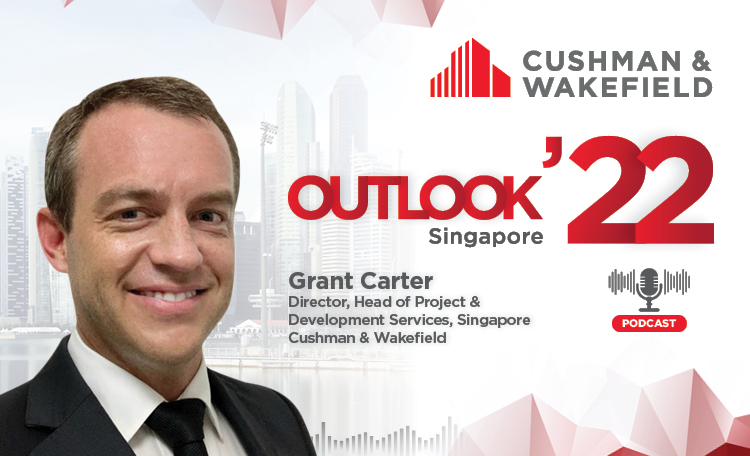PRIVATE RESIDENTIAL
Continued resilience in the private residential market
The private residential market has shown remarkable resilience, with prices continuing to rise despite economic uncertainties, although lower new launch volumes have led to fewer overall transactions. While new launches in July have continued to see positive momentum, buyer demand will continue to favour developments which are well-priced and offer good value proposition. The bulk of private residential volumes are expected to be driven by the resale market. Beyond steady owner-occupier demand, resale properties have become more attractive due to rising rents, lower interest rates, and a substantial price gap between new and resale properties.
Overall private residential sales volume declined by 29.4% qoq to 5,128 units in Q2 2025, though it rose by 4.3% yoy compared to Q2 2024. The bulk (71.1%) of overall sales volume was driven by the resale market. Due to fewer new units launched for sale in Q2 2025, new sales volume fell by 64.1% qoq to 1,212 units. Subsale volume also fell by 16.2% qoq to 269 units, while resale transactions increased by 2.3% qoq to 3,647 units. In H1 2025, overall private residential sales volume rose by 35.5% yoy to 12,389 units, compared to 9,145 units sold in H1 2024.
Despite current market uncertainty, new launch performance remains relatively healthy. In H1 2025, five out of ten (50%) major projects (more than 100 units) launched during the period managed to sell more than 50% of their units during their month of launch.
Barring new cooling measures and unforeseen economic shocks, overall sales volumes are expected to end at 19,000-23,000 units in 2025, compared to 2024 volumes of 21,950 units. With a steady stream of new project launches anticipated in 2025, buyers are likely to remain selective, prioritising developments which are well-priced and offer good value proposition. Several upcoming notable new launches in 2H 2025 such as LyndenWoods (343 units, launched in July and estimated 94% sold-out during launch weekend), UpperHouse (301 units, launched in July and estimated 54% sold during launch weekend), The Robertson Opus (348 units, launched in July and estimated 41% sold during launch weekend), Canberra Crescent Residences (376 units), Springleaf Residence (941 units), Promenade Peak (596 units) and River Green (524 units) are expected to lift new sales volumes.
Prices remain resilient supported by new launches
Private residential property prices rose by 1.0% qoq in Q2 2025, moderating from 0.8% qoq growth in Q1 2025. As of H1 2025, private home prices grew by 1.8% ytd, lower than 2.3% ytd price growth over the same corresponding period in H1 2024.
Landed residential prices grew by 2.2% qoq in Q2 2025, accelerating from 0.4% qoq growth in Q1 2025, supported by its limited supply and resilient underlying local demand.
Non-landed residential prices grew by 0.7% qoq in Q2 2025, slowing down from 1.0% qoq growth in Q1 2025. Non-landed residential prices were driven by the Core Central Region (CCR) and Outside Central Region (OCR) market segments, which rose 3.0% qoq and 1.1% qoq respectively in Q2 2025. In contrast, Rest of Central Region (RCR) prices fell 1.1% qoq in Q2 2025, following 5 consecutive quarters of growth. The decline in RCR prices may be a temporary fluctuation, attributed to the specific mix of units sold during the quarter, rather than an indication of waning demand for RCR properties. The CCR market is emerging as a promising sector, poised for potential growth after a prolonged period of sluggish price appreciation. In H1 2025, CCR non-landed prices recorded an increase of 3.8% ytd (highest H1 growth since H1 2018 growth of 6.4% ytd), compared to RCR and OCR price growth of 0.6% ytd and 1.4% ytd respectively. Nonetheless, current cooling measures would likely cap any sharp increases in price growth.>
Following the past decade of underperformance of CCR non-landed prices, it has led to a narrowing price gap between CCR and the other market segments. Based on caveats* for resale non-landed properties (as of 25 July), the price gap of CCR over RCR and OCR has narrowed to 1.1 times and 1.4 times respectively as of Q2 2025, compared to 1.3 times and 1.8 times respectively in Q2 2015. Though the price gap for new sales* between CCR and OCR is not as pronounced, which has shrunk to 1.5 times as of Q2 2025 from 1.6 times as of Q2 2015, while CCR and RCR price gap remains at around 1.2 times as of Q2 2025 compared to a decade ago.
* For non-landed transactions, 99-year leasehold, sizes between 700 - 1,100 sf
Notwithstanding the revised seller stamp duty (SSD) rates and period, private residential prices are forecasted to grow by around 2-3% yoy for the whole of 2025, slowing down from 3.9% yoy growth in 2024, supported by resilient upgrading demand for private housing (HDB resale prices continued to grow by 0.9% qoq in Q2 2025 for 24 consecutive quarters) amid still-low unemployment rates and strong household balance sheets.
Low unsold inventory and heightened construction costs underpin new launch prices
Total unsold inventory rose slightly by 2.1% qoq to 18,653 units in Q2 2025, though it remains below the ten-year annual average of 22,452 units.
Despite low unsold inventory, developers are expected to exercise greater caution and selectivity in their land banking activities. Recent GLS tenders have showed varied results, with stronger developer interest received or even record-breaking prices for certain sites with good locational attributes and pent-up market demand. For example, the Dunearn Road GLS site, which was the first residential site in the upcoming new housing area in Turf City, drew a total of nine bids. Awarded in March this year, the Bayshore Road GLS site garnered eight bids and was sold at a new benchmark land price in the Outside Central Region. In comparison, other sites drew more lukewarm responses or lower bid prices compared to historical levels, such as the Lentor Gardens GLS site (tender awarded in April) which attracted only 2 bids and fetched a lower bid price compared to past sites sold in Lentor.
Amidst a higher new launch pipeline this year, new launches are expected to be priced competitively. Developers are unlikely to lower prices significantly as unsold inventory remains low and development costs remain elevated.
Rents to grow in 2025 amidst low new completions and steady demand
Private residential rents rose at a faster pace by 0.8% qoq in Q2 2025, compared to 0.4% qoq in Q1 2025, marking the second consecutive quarter of increase. In H1 2025, rents grew by 1.2% ytd, compared to -2.7% ytd decline in rental growth over the same corresponding period in H1 2024. Islandwide private residential vacancy rates rose 0.6% points to 7.1% in Q2 2025.
A broad-based increase in rents was recorded across all non-landed residential segments, of which the high-end CCR rents outperformed and grew by 1.8% qoq, while the mass market OCR rose 0.1% qoq and mid-tier RCR rents remained flat in Q2 2025.
Rents are expected to stabilise and could see growth of 3.0%-5.0% yoy in 2025, compared to 1.9% yoy decline in 2024. While expat demand might slow due to economic uncertainty, higher levels of international students would be supportive of rental growth amidst a constrained completion pipeline.
OFFICE
Prime office demand continues to accumulate
Trade tensions and slowing economic growth have led to a slight decline in office rents, with tenants resisting rental increase and landlords of older properties becoming more accommodative to retain tenants and sustain occupancy. In Q2 2025, Central Region office rents declined by 0.3% qoq, reversing the 0.3% increase in the previous quarter. This was mainly due to a 0.4% qoq drop in the Central Area, while the Fringe Area posted a modest 0.1% qoq gain. The fall in rents could be driven by older offices amidst a continued flight to quality. Based on C&W’s basket of Grade A offices, CBD Grade A office rents maintained their uptrend by growing 0.6% qoq in Q2 2025.
Nonetheless, islandwide office net demand in Q2 2025 remains positive at 0.1 msf, driven by the Downtown Core (0.2 msf), underscoring occupiers’ continued preference for Core CBD locations. In contrast, the Rest of Central Area saw net demand fall by 0.3 msf. The Outside Central Region and Fringe Area saw positive net demand of 0.1 msf in total in Q2 2025.
Islandwide office vacancy rates tightened to 11.4% in Q2 2025, from 11.7% in the prior quarter, amidst positive net demand and lower net new supply. Although economic uncertainty continues to weigh on demand, overall vacancy rates are expected to remain supported by limited upcoming new supply. Based on C&W basket of office developments under construction, no major completions are slated for H2 2025 islandwide, and average annual new supply in the next two years is projected at just 0.5 msf, less than half the historical annual net demand of 1.3 msf.
While office relocation activities have increased slightly in H1 2025, leasing activities remain characterised by occupiers’ preference to renew their leases rather than relocate due to capital expenditure constraints amidst current economic uncertainty. That said, demand for CBD Grade A offices continue to accumulate amidst lower interest rates and a persistent flight to quality trend.
C&W forecasts CBD Grade A office rents to grow 2–3% in 2025, following a 1.2% increase YTD in the first half of the year, barring a sharp economic downturn. CBD Grade A office rental growth is poised to accelerate in 2026 as uncertainty clears, potentially unleashing pent-up office demand into a market marked by more limited quality supply.
In terms of prices, Central Region office prices continued to drop 1.1% qoq in Q2 2025, a third quarter of decline amid current economic uncertainties Despite the price drop, overall transaction volumes gained momentum as the strata office market remains resilient. In Q2 2025, the Central Region recorded 91 office strata transactions, a 32% increase from 69 transactions in the previous quarter.
RETAIL
Suburban retail market remains resilient
Central Region retail rents rose by 0.9% qoq in Q2 2025, reversing the 0.5% decline recorded in the previous quarter. Both the Central Area and Fringe Area contributed to the growth, with rents increasing by 0.7% and 0.9% qoq, respectively. The growth in rents could be driven by tier-one retail malls which continue to see low vacancy rates and strong footfalls. While top tier retail locations continue seeing healthy leasing interest, islandwide retail net demand was negative 0.2 msf in Q2 2025, highlighting the challenging retail operating environment.
Orchard continues to be the premier expansion destination, buoyed by Singapore’s affluent population and strategic role as a secure gateway to Southeast Asia. While Orchard retail vacancy rate increased slightly to 6.9% in Q2 2025, from 6.8% in the previous quarter, it remained below the 7.1% recorded in Q2 2024. Rising luxury sales in the region have supported new store openings since the second half of last year, including expansions by Burberry and Tod’s at Wisma Atria, Tom Ford at Paragon, and Celine, as well as the reopening of Van Cleef & Arpels and Prada at ION Orchard. Looking ahead, Prada Beauty is set to expand at Paragon, while Blancpain and Breguet will open new stores at ION Orchard.
The suburban retail market remains resilient, supported by strong residential catchments and ongoing consumer demand for convenience. In Q2 2025, the Outside Central Region retail vacancy rate held steady at 5.2%, with net demand turning positive at around 0.04 msf, up from -0.06 msf in the previous quarter. Suburban retail demand has consistently been driven by F&B and lifestyle brands. So far this year, Luckin Coffee, Chagee, and Munchi Pancakes have expanded across several prime suburban malls, Nitori has taken over BHG’s former space at Junction 8, and Chinese lifestyle brand KKV has expanded at Bedok Mall following its debut at Tiong Bahru Plaza. Retail demand increasingly centers on experiential concepts, as consumers continue to value tangible engagement despite online competition.
Overall, retail rents are expected to remain underpinned by limited new supply in the coming years and sustained demand for prime spaces, driven by ongoing government initiatives, a robust pipeline of events and the opening of new attractions. While evolving consumer spending patterns, high operating costs and economic uncertainty are posing challenges, top-tier malls and well-located units with strong footfall are likely to continue backfilling vacancies quickly.







